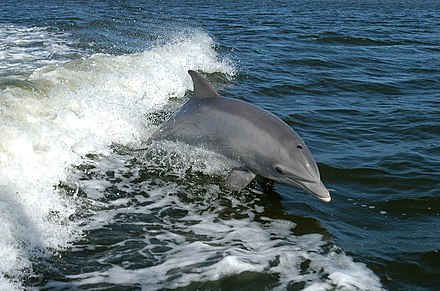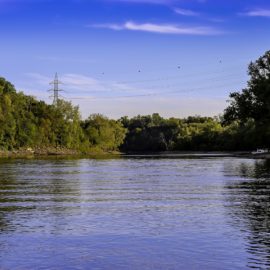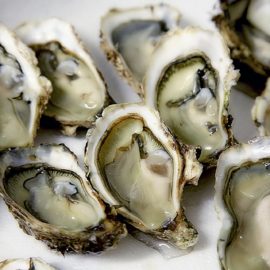
The Mid-Barataria Diversion is needed. But the bottle nosed dolphin population would suffer, badly. What to do as we need both.
A plan to divert fresh water and sediment from the Mississippi River to the Barataria Basin could virtually wipe out bottlenose dolphins in that area over the next few decades, though state officials plan to spend $60 million to protect some of the mammals. The $2 billion Mid-Barataria Sediment Diversion project, which could be built near Myrtle Grove in Plaquemines Parish beginning next year if permits are approved, is aimed at restoring and maintaining wetlands lost to sea level rise, subsidence, and other factors. But sending freshwater to the basin and nearby bay, a brackish water environment, spells out trouble for the 2,000 dolphins that call the Barataria Bay home.
nola.com
To solve this problem there are steps that are being taken.
To preserve as many of the animals’ lives as possible, the state Coastal Protection and Restoration Authority and the National Marine Fisheries Service are working on a mitigation plan. The draft plan would see Louisiana spend: $20 million on a marine mammal intervention program that would help the dolphins, which could develop lesions and even die after exposure to fresh water, nutrients and sediment, $20 million to monitor the bay’s dolphin population before and after the diversion begins operations and $20 million on dolphin stewardship measures, including a network aimed at nursing wounded dolphins back to health; public education and other measures to reduce threats from fishers and dolphin hunters; and a contingency fund to address possible mass dolphin deaths. Coastal authority chairman Chip Kline said the authority recognizes the threat the diversion may pose to the cetaceans and other wildlife. Officials expect to release a final version of their plans to mitigate that harm in late June. “We’ve used this information and all the data available to us to develop measures that put us in the best position to minimize negative impacts to the dolphin population to the extent possible. Further, we do believe that the statewide measures will increase the survival of dolphin stocks across Louisiana,” Kline said.
Will these efforts work? Can the dolphins be saved? Some are not sure.
Still, some researchers remain unconvinced that those efforts will protect a dolphin population still recovering from the effects of the 2010 BP oil spill. A new study, commissioned by the federal Marine Mammal Commission and published in the scientific journal Marine Mammal Science in March, predicts that 97% of the bay’s dolphins will be dead in 50 years, and the few that remain will only be found near Grand Isle, where the water is more saline. “The declines are predicted to be greater than those caused by the Deepwater Horizon oil spill and would take place just as the population is starting to recover from the spill,” the report said.
Barataria Basin is the home of the pods and it is the water consistency that is the problem. They like the brackish water and the diversion will make it less salty and more freshwater based.
The Barataria Basin, the broad area of freshwater marshes and brackish wetlands that includes the bay and is bordered by the Mississippi River and Bayou Lafourche, is home to one of the 31 groups of dolphins that call the Gulf of Mexico home. Other dolphin groups are found in Breton Sound, the Mississippi Sound and elsewhere around the Gulf Coast. Dolphins have populated Barataria since the start of the 20th century, when wetlands erosion provided them with enough space behind the coast’s barrier islands to forage for food. Their potential deaths have been one of two major issues facing the state authority and the Louisiana Trustees Implementation Group, which is made up of the state and federal agencies overseeing the spending of $5 billion BP paid to restore natural resources in the aftermath of the Deepwater Horizon oil spill. The other major issue will be changes in the types of commercial fish that can survive in the bay after the diversion is opened. The diversion is expected to make most existing oyster beds unusable, to reduce catches of more saline and brackish water fish species, and to delay the growth of some shrimp species. Still, state officials believe the project is the state’s best shot at providing enough sediment to build an estimated 27 square miles of wetlands over 50 years.
The bottle nosed dolphins are protected under the Marine Mammal Protection Act.
While bottlenose dolphins are protected under the federal Marine Mammal Protection Act, Louisiana’s congressional delegation inserted a provision in the Bipartisan Budget Act of 2018 requiring the National Marine Fisheries Service to allow the state to deviate from rules prohibiting “takings” of marine mammals – actions that would harm or kill the dolphins. The waiver language also required state and federal officials to “consult” on ways to reduce threats to the dolphins, though the language does not say whether or how many of the dolphins are required to be saved. However, as part of an environmental assessment required by the Army Corps of Engineers, officials must also determine whether the diversion violates broader environmental requirements under the federal National Environmental Policy Act. The trustees group also must consider whether appropriate stewardship measures are being developed per the federal Oil Pollution Act, which governs the spending of the natural resource money. The study at issue measures the effects of the diversion in decade-long increments over the first 50 years of its operation. It is an update to a 2021 study, also sponsored by the Marine Mammal Commission, that predicted an 85% decline in the dolphins after the diversion is built, said study author Lori Schwacke, a marine biologist with the National Marine Mammal Foundation.
Even the initial draft of the EIS showed that there would be damage to the dolphins.
The draft version of the Corps’ environmental impact statement, also released last year, predicted that as much as 30% of the area’s dolphins could be killed in any given year of diversion operations. To reduce the harm done, the state intends to monitor the dolphin population before and after it comes online, Kline said. To better protect the animals, officials might shift when and for how long the diversion is operated, or limit the amount of freshwater that flows through it. The state also intends to pump more money into a stranding network that has long worked to rehabilitate wounded dolphins, whales and manatees. That extra money will be provided in 2026, when the network’s existing funding is set to expire. The network’s expansion should reduce the time an individual dolphin is stranded, and potentially increase animal survival rates, Kline said. Separately, an “unusual mortality event” contingency fund will cover staffing costs, should there be mass dolphin deaths. There have been several such events in Louisiana and Mississippi coastal waters dating back to just before the BP spill in April 2010, with the latest occurring in 2019 after an extremely lengthy Mississippi River high water period.
What would all of this mean to the workers?
Though just what those staffers would do has yet to be decided, they could be tasked with moving or rehabilitating wounded dolphins, Kline said. But the sickly animals might not survive the transport or adapt well to their new location, Schwacke said. There’s also no guarantee the dolphins won’t immediately swim back to Barataria once they are released. “Plus, can you imagine trying to relocate 2,000 or so dolphins?” Schwacke added. “I’m not saying that it’s not worth a try. I think we need to be prepared to do something, even if it only saves a few dolphins from a slow, painful death.”
On the one hand I know that given decades and centuries evolution will solve this problem but 50 years is not enough.



